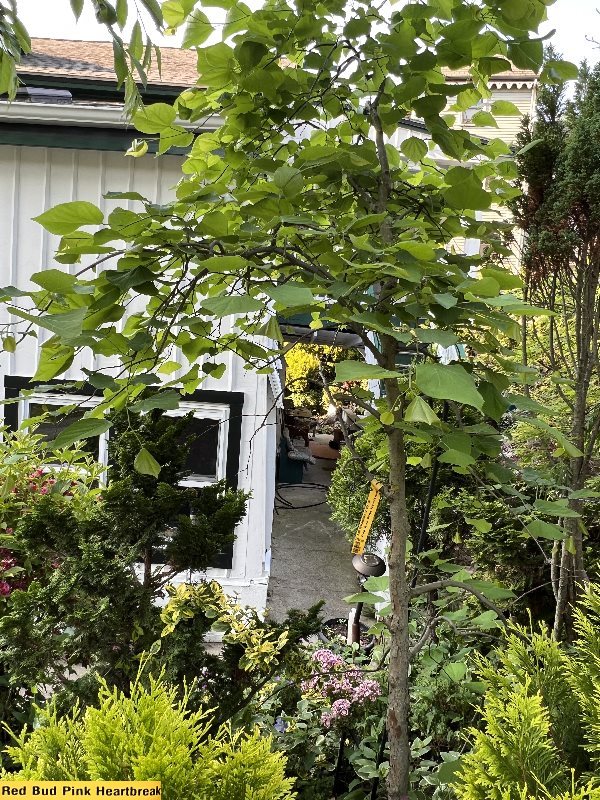
Ashley Davidoff TheCommonVein.net Our Garden
The Weeping Red Bud, or Cercis canadensis ‘Lavender Twist,’ is a popular cultivar of the Eastern Red Bud tree. It is known for its unique weeping growth habit, which sets it apart from the typical upright form of the species. The Weeping Red Bud is cherished for its graceful cascading branches, beautiful spring flowers, and attractive foliage.
Here are some key features of the Weeping Red Bud:
Appearance: The Weeping Red Bud showcases a weeping or pendulous form, with its branches gracefully arching downward. It typically reaches a height of around 6 to 10 feet (1.8 to 3 meters) and spreads out to create an elegant canopy. The heart-shaped leaves emerge as a reddish-purple color in spring, gradually transitioning to a deep green as summer approaches. In early spring, clusters of pink to lavender flowers appear directly on the branches before the leaves emerge, adding a splash of color to the landscape.
Growing Conditions: Weeping Red Bud trees thrive in full sunlight to partial shade. They prefer well-draining soil but are adaptable to various soil types. They are relatively hardy and can tolerate a range of temperatures and climates, making them suitable for different regions. Regular watering and mulching are recommended to help maintain soil moisture.
Care and Maintenance: The Weeping Red Bud requires minimal maintenance once established. Pruning may be necessary to maintain the desired weeping form and remove any dead or crossing branches. Pruning is typically done in late winter or early spring before new growth emerges. Regular watering during dry periods and a layer of mulch around the base of the tree can help retain soil moisture and support healthy growth.
Landscape Use: The Weeping Red Bud is a popular choice for adding visual interest and elegance to gardens, landscapes, and even smaller spaces. Its weeping branches and striking flowers make it a captivating focal point or specimen tree. It can be planted as a standalone tree or in groupings to create a dramatic effect. It is also suitable for planting near ponds, water features, or in woodland gardens.
